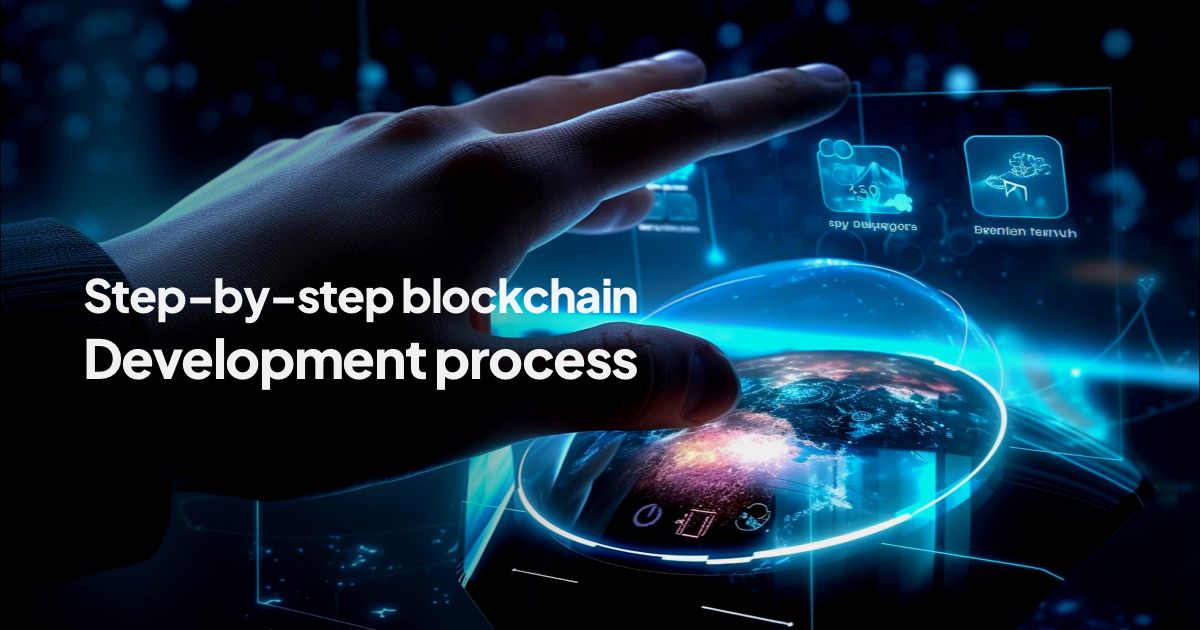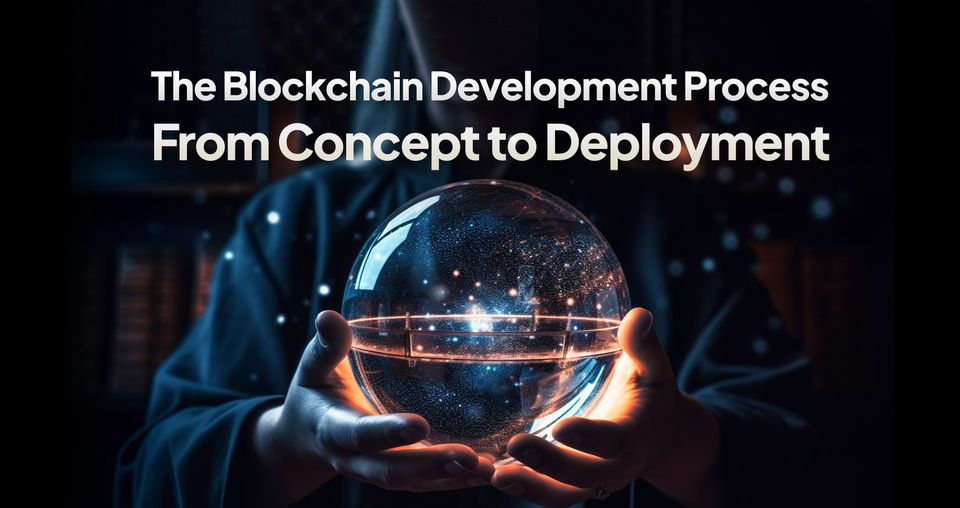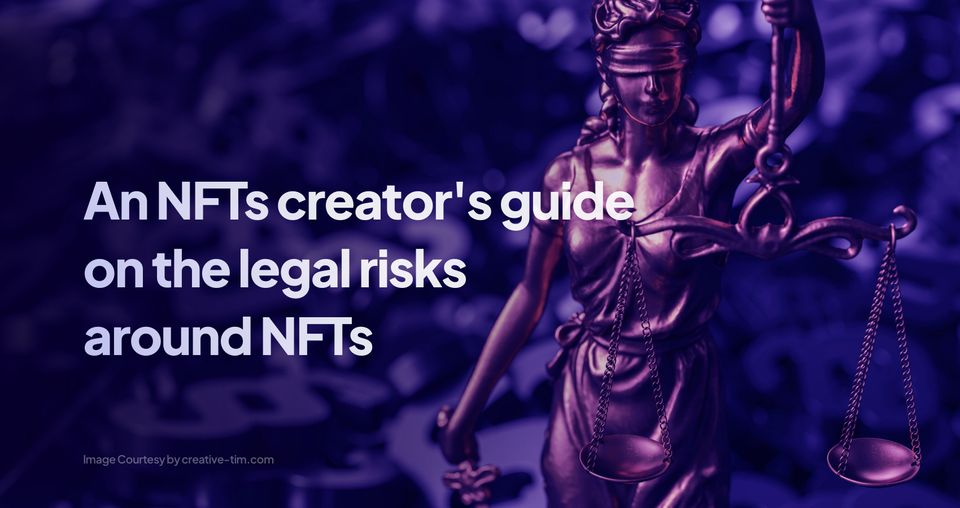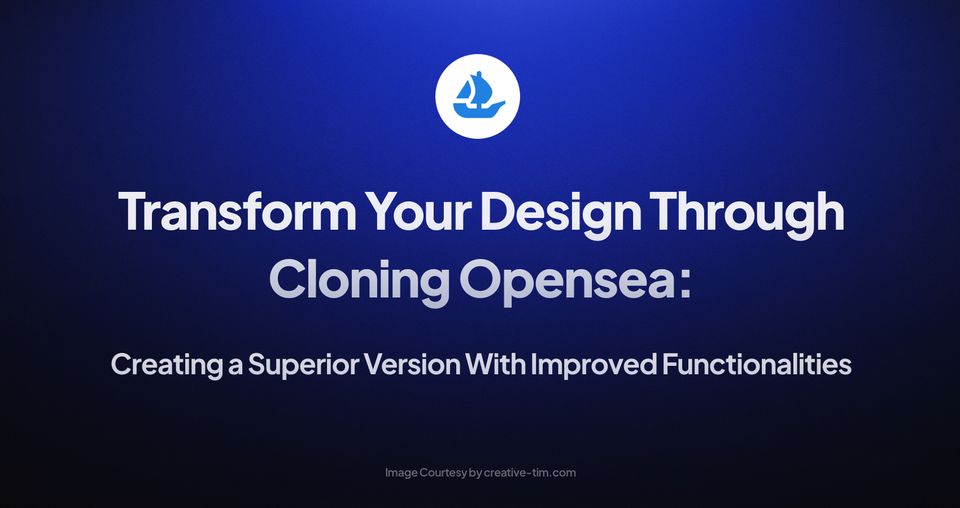The first step is to determine the purpose of the blockchain, how it will be used, who will control it, and what level of anonymity is required.
The answers to these questions directly determine the choice of blockchain architecture and the project's complexity. It could be the creation of a new decentralized cryptocurrency, an open public registry of property rights, a closed corporate network, or something else.
This article will discuss how to develop a blockchain.
Perspectives of new blockchains

New blockchains are becoming increasingly fast and easily scalable and offer unlimited possibilities for developing dApps and the development of the DeFi sphere. Among them are the following projects:
- Avalanche. It allows developers to release public and closed blockchains and customize programming languages. It also offers convenient virtual machines to develop smart contracts. Avalanche handles 4500 transactions per second.
- Fantom. It solves the scalability problems of Ethereum. It uses two consensus algorithms (aBFT and PoS) at the same time. It conducts 20 000 transactions per second. If needed, Fantom can easily integrate into any other blockchain as a consensus module. It is compatible with EVMs.
- MultiversX (former Elrond). It is a platform for launching smart contracts and developing fast DeFi applications. The special sharding technique increases network speed up to 250 000 transactions per second.
When modeling the new blockchain system, it is essential to determine right away which of the current serious problems it will solve. Just another Bitcoin or Ethereum clone will not interest anyone, while quantum-resistant blockchains will be in high demand soon.
Blockchain types
There are 3 types of blockchains according to the degree of openness:
- Public. For example, Litecoin, Ethereum, and Bitcoin. All users have equal rights. Everyone can access the network, see the history of transactions, and participate in the consensus algorithm. Anonymity is conditional (80% of network users can be calculated). It is a fully decentralized blockchain with no privileged nodes.
- Hybrid. For example, XinFin, R3 CEV, and IBM Hybrid Blockchain. Users have different rights. Only selected nodes can make changes, which developers assign (sometimes can be chosen by voting). All can view history, but there can be hidden entries. Suitable for corporate networks which want to protect the privacy of their clients.
- Private. For example, Hyperledger, Ethereum Enterprise, and R3 Corda. All users have equal rights, but few have access to the registry history. Permission is granted by a central organization, which may consist of one or more validators. A closed network is characterized by fast transaction processing, as there is no unnecessary burden in the form of mass viewing of transaction details. The private blockchain is suitable for corporate projects. It makes it easier for classic financial institutions to enter the world of crypto technologies.
According to the consensus algorithm, we can distinguish 4 main types of blockchains:
- Proof-of-Work (PoW). This consensus algorithm allows a block to be completed and rewarded to the node with the largest computational contribution. High commissions and power consumption, as well as slow speed of transaction processing, characterize it.
- Proof-of-stake (PoS). According to the share proof principle, the user with the most blocked funds in the protocol becomes the transaction validator (blocking time is also considered). It is considered the most environmentally friendly since it does not require computing power on an industrial scale. It is characterized by high transfer speed, low fees, and easy scalability.
- Proof-of-authority (PoA). In the case of proof-of-authority, nodes with high merit and ratings become validators. It is good for private blockchains due to the high degree of centralization and no need to stake coins and solve complex tasks to validate transactions.
- Proof-of-burn (PoB). Proof-of-burn implies that the node that destroyed the most coins gets the right to verify the transaction. By burning the currency, the user demonstrates a commitment to the network, gaining the right to mine. This is a greener and less energy-intensive version of the PoW algorithm.
Developing a successful blockchain solution requires a systematic approach encompassing several key steps.
Step-by-step blockchain development process
The blockchain development process will vary greatly depending on the goals, tools chosen, and additional features. But our step-by-step blockchain development plan will give you a general understanding.

Ideation and conceptualization
The blockchain development process begins with clearly understanding the problem or use case the technology aims to address. This stage involves brainstorming ideas, conducting market research, and identifying potential blockchain applications. Developers can conceptualize innovative solutions that leverage the technology's strengths by analyzing existing systems and exploring blockchain's unique capabilities.
Requirements gathering
Once the concept is established, the next step is to define the requirements for the blockchain solution. This involves identifying the specific features, functionalities, and performance criteria necessary for the project's success. Requirements for blockchain for supply chain management and blockchain for healthcare will cardinally differ. So, a collaboration between developers, stakeholders, and end-users is crucial to ensure that all perspectives are considered, and the solution aligns with the desired objectives.
Design and architecture
Designing the blockchain architecture is laying the foundation for the development process. This includes determining the type of blockchain (public, private, or hybrid), selecting the appropriate consensus mechanism, and defining the data structure. Developers also need to design smart contracts and APIs to facilitate blockchain interactions. Careful consideration must be given to scalability, security, and privacy requirements during this phase.
Development and testing
With the design in place, blockchain solution development can commence. At first, this step will demand:
- Writing a class to process the blocks at the moment of starting the nodes
- Configuring local chain synchronization
- Configuring the blockchain display in the browser
- Writing algorithms for generating new blocks and connecting them with previous blocks
- Prescribing requirements to the block hash structure if the PoW algorithm is used
- Implementing the consensus algorithm
Then this step involves coding the smart contracts, building the necessary infrastructure, and integrating the blockchain with existing systems if required. Regular testing, including unit testing, integration testing, and security testing, is crucial to identify and resolve any issues or vulnerabilities.
Deployment and integration
Once the blockchain solution is developed and thoroughly tested, it is ready for deployment. The deployment process depends on the chosen blockchain platform and infrastructure requirements. It involves setting up nodes, establishing network connectivity, and configuring the necessary security measures. Integration with external systems may also be required to enable seamless data flow and interaction between the blockchain and other applications.
Maintenance and upgrades
After deployment, ongoing maintenance and upgrades are necessary to ensure the blockchain solution remains secure, functional, and up to date. Regular monitoring and performance analysis help identify potential bottlenecks or vulnerabilities. Upgrades may involve implementing new features, improving scalability, or addressing any identified weaknesses. Maintenance and upgrades are critical for the long-term success and sustainability of the blockchain solution.
Team recruitment for blockchain development
Crypto projects can have up to a hundred employees, most of whom work remotely, but to start is enough to hire 5 people. Here are their positions:
- Developer. He or she must have system programming skills and knowledge of Java and C/C++. You can simplify blockchain development by using an existing coin, like Ethereum, as the basis. To write smart contracts in EVM, the developer needs experience in Solidity development. You can look for such employees on GitHub.
- Marketing expert. He or she must be able to find new partners and audiences, as the market is already too crowded, and supply outstrips demand. He or she must be proficient in lead generation, understand market conjuncture, and have knowledge of the leading projects, their features, and their weak points.
- Bounty manager. He or she develops partner programs for all wishing to promote the project earning on it. He or she must attract opinion leaders from social networks and professional journalists and offer them special partner conditions for advertising. All bonuses are usually paid in coins or tokens of the project, so there is no need for additional budgeting.
- WhitePaper copywriter. He or she must comprehensively describe the concept of the project and all of its technical, economic, and marketing details. The quality of the WhitePaper directly affects the number of interested users and the level of initial trust.
- Market analyst. The specialist must predict the movement of cryptocurrency rates. Thanks to him, the startup will adjust its ICO/IEO strategy and reinvest the funds from investors to get more profits in the future. The minimum experience is 5 years.
This is the backbone around which the blockchain project will develop. In the future, new employees will be added, including tech support, PR manager, security specialists, content manager, community leader, etc.
For a startup with a modest budget, you can invite beginners without an impressive track record. The main qualities are responsibility, passion, and talent. Special recruiting tools can help you find suitable candidates on your own without hiring HR.
As for professionals with great experience and a big name, they must be enticed away from major projects. Only ambitious tasks, a wide range of powers, and money can interest them, so only rich companies can afford such headhunting.
Conclusion
Each stage is crucial in successfully implementing a blockchain solution, from ideation and conceptualization to deployment and maintenance. By following a systematic approach, developers can harness the full potential of blockchain technology and unlock its benefits across various industries. With continuous innovation and refinement, blockchain solutions can reshape the future of digital transactions, data management, and trust in the modern world.




